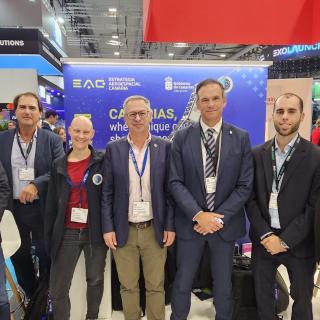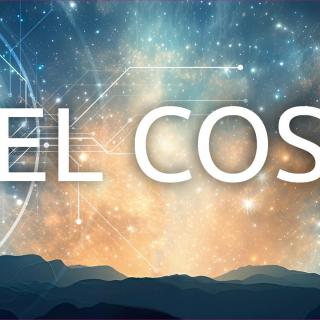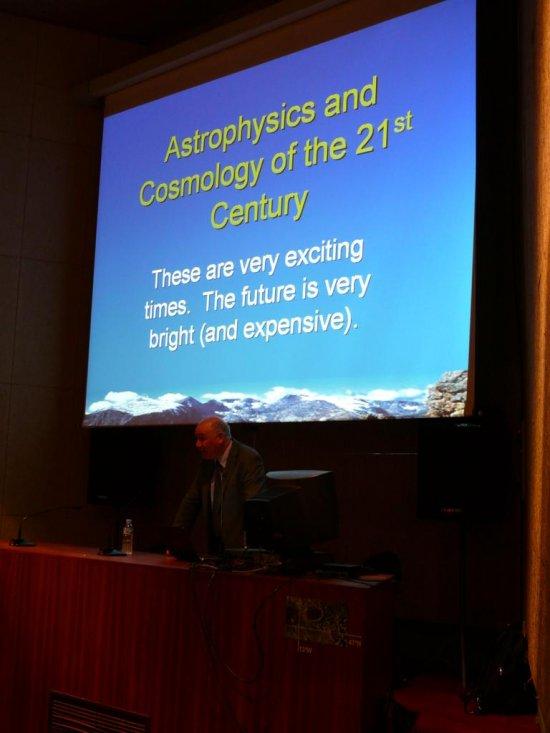It may interest you
-
 Cristina Ramos Almeida, investigadora del Instituto Astrofísico de Canarias (IAC) y coautora de más de un centenar de artículos sobre galaxias y agujeros negros, ha sido una de las homenajeadas en la primera edición de los premios "Mujeres tenían que SER" de Radio Club Tenerife, Cadena SER. El evento, celebrado en la noche del miércoles 29 de octubre, en la sala Adán Martín del edificio de Presidencia del Gobierno en Santa Cruz de Tenerife, ha teñido el espacio de reconocimiento al talento femenino en diversos ámbitos. La distinción resalta la crucial contribución de Ramos Almeida a laAdvertised on
Cristina Ramos Almeida, investigadora del Instituto Astrofísico de Canarias (IAC) y coautora de más de un centenar de artículos sobre galaxias y agujeros negros, ha sido una de las homenajeadas en la primera edición de los premios "Mujeres tenían que SER" de Radio Club Tenerife, Cadena SER. El evento, celebrado en la noche del miércoles 29 de octubre, en la sala Adán Martín del edificio de Presidencia del Gobierno en Santa Cruz de Tenerife, ha teñido el espacio de reconocimiento al talento femenino en diversos ámbitos. La distinción resalta la crucial contribución de Ramos Almeida a laAdvertised on -
 The Instituto de Astrofísica de Canarias (IAC), through IACTEC-Space, is participating this week in Space Tech Expo Europe, the largest space industry trade fair on the continent, held in Bremen from November 18 to 20. The team is located in the Spain Space pavilion, alongside the Canary Islands Aerospace Strategy (EAC), to showcase the technological developments of the CELESTE laboratories and strengthen international collaborations in the space sector. The I nstituto de Astrofísica de Canarias (IAC) is participating once again in Space Tech Expo Europe, the leading event for the spaceAdvertised on
The Instituto de Astrofísica de Canarias (IAC), through IACTEC-Space, is participating this week in Space Tech Expo Europe, the largest space industry trade fair on the continent, held in Bremen from November 18 to 20. The team is located in the Spain Space pavilion, alongside the Canary Islands Aerospace Strategy (EAC), to showcase the technological developments of the CELESTE laboratories and strengthen international collaborations in the space sector. The I nstituto de Astrofísica de Canarias (IAC) is participating once again in Space Tech Expo Europe, the leading event for the spaceAdvertised on -
 La Fundación CajaCanarias organiza la octava edición de su Foro Enciende el Cosmos, que este año volverá a contar con la participación de destacados científicos e investigadores de reconocido nivel nacional e internacional. Esta iniciativa de carácter divulgativo pretende expandir, desde la exploración científica, la comprensión del Universo en su conjunto, relacionando el pasado con el presente y con una clara búsqueda de respuestas de cara al futuro. El programa se divide en tres sesiones, a celebrar los días 13 de febrero, 20 de marzo y 10 de abril, en el Espacio Cultural CajaCanarias deAdvertised on
La Fundación CajaCanarias organiza la octava edición de su Foro Enciende el Cosmos, que este año volverá a contar con la participación de destacados científicos e investigadores de reconocido nivel nacional e internacional. Esta iniciativa de carácter divulgativo pretende expandir, desde la exploración científica, la comprensión del Universo en su conjunto, relacionando el pasado con el presente y con una clara búsqueda de respuestas de cara al futuro. El programa se divide en tres sesiones, a celebrar los días 13 de febrero, 20 de marzo y 10 de abril, en el Espacio Cultural CajaCanarias deAdvertised on
